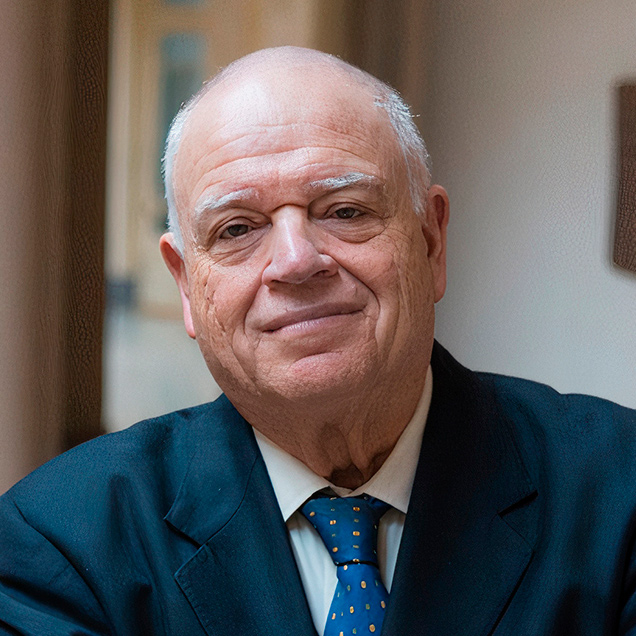Read this edition’s article introducing the four key pillars that must be considered in the Digital journey of correctional organisations.
If we want to move forward and improve corrections there needs to be a coordinated effort with a clear strategy and vision.
Simon Bonk, Chair of the Technology Solutions Network, ICPA



Simon Bonk
Chair of the Technology Solutions Network, ICPA
Only about a third of digital transformation efforts are actually successful, because of a lack of effective change management.
The development of technology cannot be in the hands of engineers alone. It must also involve legal actors, because technology is increasingly interfering with people's rights.
Ricardo Pérez Manrique, Judge, President of the Inter-American Court of Human Rights



Ricardo Pérez Manrique
Judge, President of the Inter-American Court of Human Rights
When we see that, for example, people born after 1995 are considered to have no privacy because all their relevant data is in the hands of third parties, we face problems that affect people’s rights.
Victim Notifications, Offender Management Systems, and Medical Technology were topics at the forefront of discussion 20 ago, and continue to be relevant topics today.
Zacc Allen, President of the Corrections Technology Association, USA



Zacc Allen
President of the Corrections Technology Association, USA
Overall, the corrections sector has been resistant to adopting new technology for a long time. In the United States, It seems that if something was done a certain way 100 years ago, it's still being done that way today.
Bryan Stirling, Director of the South Carolina Department of Corrections, USA



Bryan Stirling
Director of the South Carolina Department of Corrections, USA
We have to be careful not to use technology just because it is there. We have to find a good balance and decide what is the best option for different situations.
Jana Špero, Secretary General, Confederation of European Probation (CEP)



Jana Špero
Secretary General, Confederation of European Probation (CEP)
The COVID-19 pandemic has shown how crucial technology is today for all of us, which is also true for probation. We are all witnesses of how supervision benefited from technologies during the lockdown, and there is no turning back.
However, we still need to critically evaluate the results of using technology, because the essence of probation work is the relationship between people and personal human engagement.
Electronic monitoring and other technologies are already developed and used in probation services across Europe. In some countries, the spread and democratisation of this technology can help choose alternative measures to detention. But for the CEP, it is important to underline that using technology in probation must be purposeful, proportionate, and consistent with probation values.
We have to be careful not to use technology just because it is there. We have to find a good balance and decide what is the best option for different situations. If used properly, technology can be a great support for probation staff and for offenders, and a real advantage in their work and rehabilitation/reintegration process, respectively.
Going forward, we are going to see many new technologies and smarter ways of using them.
Håkan Klarin, Chief Information Officer of the Swedish Prison and Probation Service



Håkan Klarin
Chief Information Officer of the Swedish Prison and Probation Service
It’s vital for us to have regulations and recommendations that outline what should and should not be done, and also serve as a guide for practitioners and vendors to learn how digital technologies and AI could be used in the justice sector.
Digital technologies can assist the correctional setting as a vehicle which provides humans with more opportunities to flourish.
Dr Victoria Knight, Associate Professor of Research at De Montfort University, UK



Dra. Victoria Knight
Associate Professor of Research at De Montfort University, UK
The digital prison family have been my closest critics and together we are proposing that digital solutions in corrections lead to desistance. Digitalisation is an opportunity to recover, build positive human relationships, belong to nurturing communities and engage in decision making. These ideas are founded on collective efforts from researchers and practitioners where together we have laid down evidence-based suggestions to ensure the business of digital aligns to powerful journeys into desistance.
Our focus then, aptly named “The Digital Desistance Manifesto” (forthcoming) ends by suggesting the digitization of our penal settings could:
• Centre individual needs and aspirations to enable personal goal setting;
• Eradicate gaps of disadvantage;
• Maintain a minimum standard of digital competencies;
• Value opportunities to engage in human relationships and networks;
• Broker safe relationship and network opportunities;
• Support the adoption of egalitarian practices to co-produce solutions;
• Provide opportunities to record and observe personal change;
• Celebrate compassionate transformation;
• Set up partnerships where the digital enhances participation;
• Create digital online spaces where prosocial communities can flourish;
• Be rewarded for civic participation;
• Witness desistance journeys of others;
• Co-produce mass communicated messages of lived experiences;
• Create an informed curriculum to boost knowledge of justice;
• Include diverse voices; and
• Raise expectations for digital literacy.
It is important to try educating the public about how inmates should not be denied access to technological tools. Instead, access to technology must be viewed as means to their rehabilitation.
George Jackson, ICT Advisor, former CIO of the Irish Prison Service



George Jackson
ICT Advisor, former CIO of the Irish Prison Service
Finally, it is important to try educating the public about how deprivation of liberty is the punishment and that inmates should not be denied access to technological tools while in prison. Instead, access to technology must be viewed as means to their rehabilitation.
Technology can be very helpful to enhance and improve our work, but we need to be careful to see it as an extension and not a replacement of human work.
Steven Van De Steene, Enterprise architect and Corrections technology consultant



Steven Van De Steene
Enterprise architect and Corrections technology consultant
Discover a project



